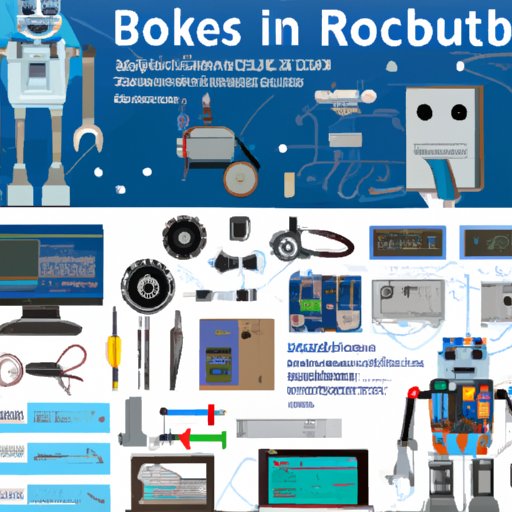Introduction
Robotics is a field of engineering and science that focuses on creating machines that can perform tasks autonomously or with minimal human input. Robotics technology has become increasingly popular in recent years due to its potential applications in many industries, including manufacturing, healthcare, agriculture, and transportation. Getting started in robotics can be an exciting and rewarding journey, but it can also be intimidating for those who are new to the field. This guide will provide an overview of the basics of robotics and how to get started.
Research Robotics Basics
Before jumping into robotics, it is important to have a basic understanding of the different types of robots and their components. There are three main types of robots: industrial robots, service robots, and consumer robots. Industrial robots are used for repetitive tasks in factories, while service robots are designed to assist humans with tasks such as cleaning or providing medical care. Consumer robots are robots that are designed for use by consumers, such as robotic vacuum cleaners or robotic toys.
In addition to understanding the different types of robots, it is important to familiarize yourself with the components used to build robots. These components include motors, sensors, controllers, and actuators. Motors provide the power necessary to move the robot, while sensors allow the robot to detect changes in its environment. Controllers are used to control the robot’s movements, while actuators are responsible for translating the robot’s commands into physical motion. Finally, most robots rely on some form of programming language, such as C++, Python, or Java, to control their functions.
Join a Robotics Community
Joining a robotics community is a great way to learn more about robotics and meet other people interested in the field. There are many local robotics events, such as hackathons, workshops, and competitions, where you can gain hands-on experience with robotics. Additionally, there are several online forums, such as the Robotics Stack Exchange and the Robotics Subreddit, where you can ask questions and get advice from experienced robotics engineers. Finally, connecting with robotics groups, such as the Association for Unmanned Vehicle Systems International (AUVSI) or the International Federation of Robotics (IFR), can help you stay up to date on the latest developments and trends in the robotics field.
Choose a Project
Once you have a basic understanding of robotics, it is time to choose a project. Selecting a project that interests you or poses a challenge will help keep you motivated and engaged throughout the process. Once you have chosen a project, do some research to learn more about it and understand what materials and tools you will need to complete it. This research can also help you identify any potential challenges that you may encounter along the way.
Acquire Necessary Resources
Once you have selected a project, it is time to acquire the necessary materials, tools, and software. Depending on the project you have chosen, you may need to purchase motors, sensors, controllers, and actuators. You may also need specific tools for soldering or programming, as well as software for controlling the robot’s functions. Make sure to research the different components and tools available so that you can select the best ones for your project.
Start Building Your Robot
Now that you have all of the necessary components and tools, it is time to start building your robot. If you are just starting out, it is a good idea to follow tutorials or reference material to ensure that you are building your robot correctly. It is also important to test the robot’s capabilities regularly to make sure it is functioning properly. This testing can help you identify any issues that need to be fixed before the robot is ready to use.
Conclusion
Getting started in robotics can seem daunting, but with the right knowledge and resources, you can quickly become an expert. Understanding the basics of robotics, joining a robotics community, choosing a project, acquiring the necessary resources, and building your robot are key steps in becoming proficient in this growing field. With the right guidance, you can unlock the potential of robotics and create amazing projects.
(Note: Is this article not meeting your expectations? Do you have knowledge or insights to share? Unlock new opportunities and expand your reach by joining our authors team. Click Registration to join us and share your expertise with our readers.)
